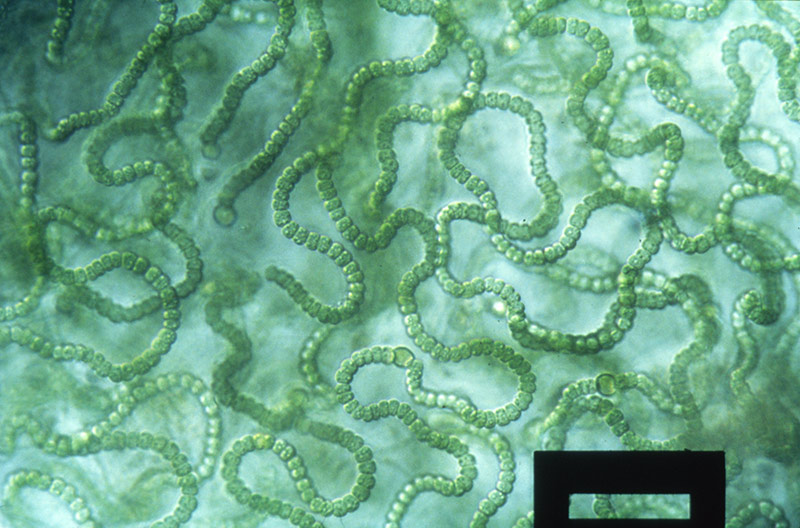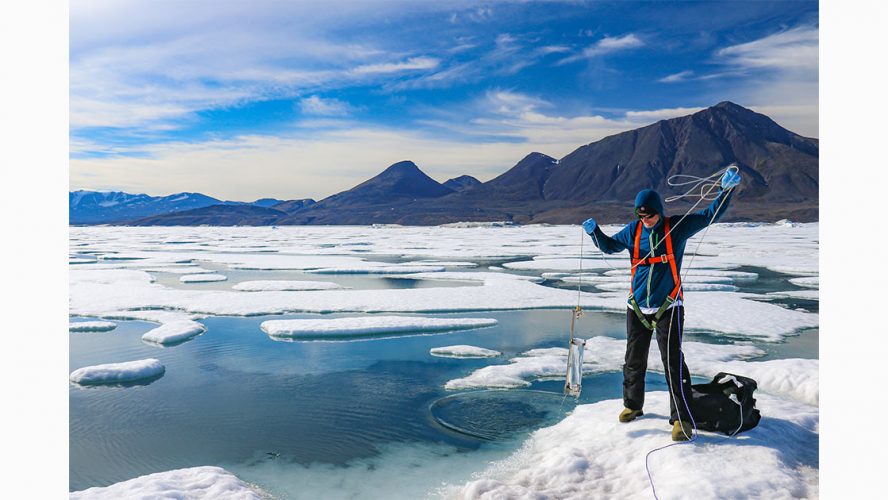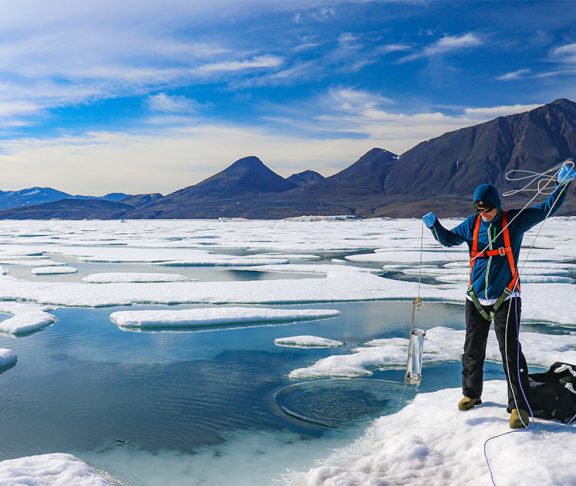Sentinel North researchers are racing against climate change to uncover clues from the northern environment that could benefit the whole world.
The vast expanses of North may look stark and desolate, but in fact, the landscape is teeming with life.
“There’s life everywhere. But it’s invisible life. It’s beyond our immediate powers of seeing. But with new molecular tools, we can really pull back the curtain,” says Dr. Warwick Vincent, a professor in the Department of Biology and Canada Research Chair in Aquatic Ecosystem Studies at Université Laval.
Dr. Vincent and Dr. Alexander Culley, a professor in the Department of Biochemistry, Microbiology and Bioinformatics at Université Laval, lead a team studying the microbiome in some of the most extreme environments on earth: glaciers, ice shelves, arctic lakes, soils, permafrost and ice-covered seas. Research is focused on the microbiome’s impact on ecosystems and human health.
The team is part of Sentinel North, a major interdisciplinary research and training program that supports over 700 researchers and students from 40 Université Laval departments working in a spirit of convergence and innovation with northern partners, public and private sector organizations, as well as other universities and research institutes in more than 20 countries. Sentinel North aims to shed light on the northern environment and its impact on humans through innovative technologies and interdisciplinary research in support of sustainable health and development.
The engine room of life on Earth
The environmental microbiome is the assemblage of all the microbes, such as bacteria, fungi, algae and viruses, in a particular habitat and its functioning is essential to the health of that habitat. Its effects extend to human well-being too, for example, to ensure healthy and safe food and water for northern populations.
“Not only are these microbes incredibly abundant and diverse, but they’re also uniquely capable of certain functions that other organisms just cannot do. They really are the engine room of life on Earth,” says Dr. Culley.
Dr. Culley describes a large ice-shelf fragment broken off from the coast, which has been in complete darkness and -60˚C temperatures. “On its surface, we found robust communities of microbes all interacting, growing and thriving. The question is, how are they able to do what they do? We are finding unique capabilities that allow these microbes to persist and thrive,” he says.
For example, in a collaboration between Sentinel North and the Natural History Museum in London, England, researchers studied samples recovered more than 100 years ago of a type of algae known as Nostoc cyanobacteria that live in the extreme polar regions in order to understand how they manage to survive. The team sequenced the DNA of this bacteria for evidence of viruses left behind in their genomes. They also looked for compounds that help the microorganisms survive the extreme conditions, which are of great interest in the development of new medicinal drugs.

Technology and convergence of disciplines helps advance research
For all of its investigations, the team uses innovative technologies to go deeper than could have been possible even a few years ago. For example, where they previously would have had to bring samples back to the lab in Quebec, they can bring a genomic sequencer into the field to get fingerprints of the microbial communities in their habitat. Other instruments allow Sentinel North researchers to measure data that would normally be impossible to gather during a northern winter. Long-term monitoring instruments in lakes measure differences in light and oxygen and nutrients, including in the most northern lake in Canada. The Amundsen research icebreaker carries dozens of sophisticated scientific systems to study all aspects of the Arctic Ocean. Nine research stations, operated by the Centre for Northern Studies, bring the laboratory into the field, as far as the northern tip of Canada at 83˚N.
And beyond technology, enhanced collaborations between disciplines are pushing research forward. Sentinel North brings together scientists from a wide scope of specialties, including engineering, physics, chemistry, and biology, to collaborate and get a holistic view of the North.
But as Dr. Vincent says, they are racing against climate change.
“We are losing these ecosystems and when we do, we are losing this genetic richness with incredible potential. It’s this treasure trove that we’re only just starting to discover,” he says.
“The North is a window to changes affecting the whole world. It can help researchers predict what changes we will see on a global scale and to better prepare for them.”



